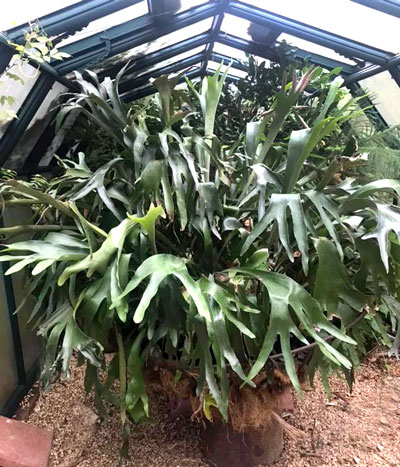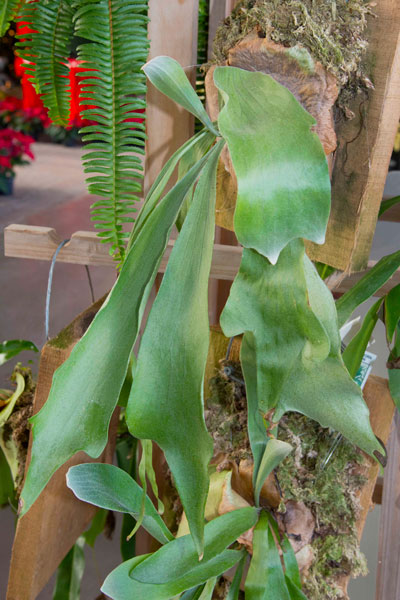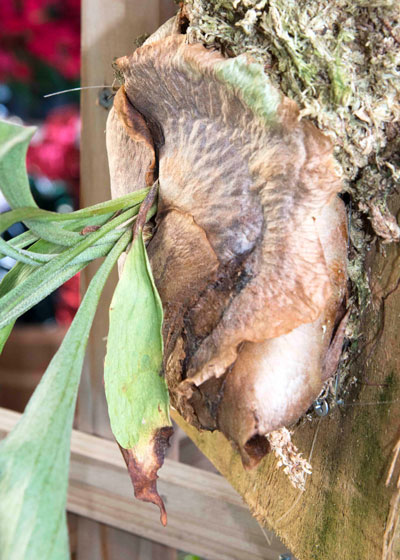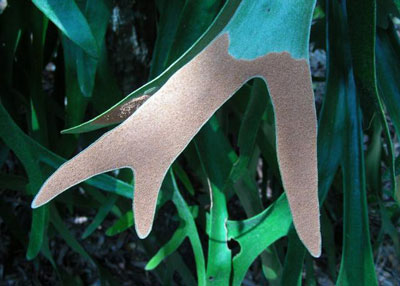My Favorite Fun Fern

When I was a kid I fell asleep at night looking through the pages of my gardening reference books. When I first came across staghorn ferns I could hardly sleep. I had to have one.
So I did what I always did there in little (back then) College Station – I watched the garden section of the Houston Post to see if one would pop up in a nursery ad. And sure enough, just a few weeks later, there they were, for sale at some nursery out in West Houston.
Mom and Dad had a shopping trip scheduled to Houston the next weekend, so I sweet-talked them into stopping by that nursery to buy one. I couldn’t go – I was busy mowing yards that Saturday, but I waited and waited for them to return. And then they, and my plant, arrived late that evening.
I grew that plant for years, I guess until I finished high school, started at A&M and transferred away to Ohio State. I really don’t know what ever happened to it. My dad took over my nursery in his retirement, and he probably sold it (as well he should have).
I’ve grown two or three more staghorns in the ensuing years. And from that I’ll tell you a little about them.

The short story of staghorns…
• Native to Southeast Asia and the South Pacific, also Australia, Africa and tropical America.
• Epiphytic (grow suspended from tree trunks, but gaining no sustenance from their support trees).
• Almost 20 species and many hybrids.
• Basal (“sterile”) fronds are brown and clasp the support almost like suction cups.
• Fertile fronds extend into the air and may grow to be several feet long. They bear the reproductive spores on their undersides.

Easiest way to grow staghorns…
• Start with a flat slab of a tree trunk.
• Secure very moist sphagnum moss on one side of the slab with staples, wire or fishing line.
• Carve a planting hole into the moss and position your small fern into the hole.
• Firm the moss around the root ball and wrap one or two more rounds of wire or fishing line to hold it in place.
• Water the new planting thoroughly.
• All watering you do from that point on will be done with a hose, letting water run slowly down into the moss.
• Water frequently. It will drain away quickly and dry out rapidly during the warm months.
• Encasing the moss lightly with dry cleaner’s plastic helps hold in the moisture during really hot weather.
• Use only water-soluble fertilizer, and feed your plant sparingly. Staghorns are very efficient at utilizing nutrients.
• Staghorn ferns require really bright light to survive indoors. A greenhouse or bright sunroom will be your best bet in the winter.
• Protect staghorns from direct sunlight, also from temperatures below the mid-30s. They will not survive freezing weather.

